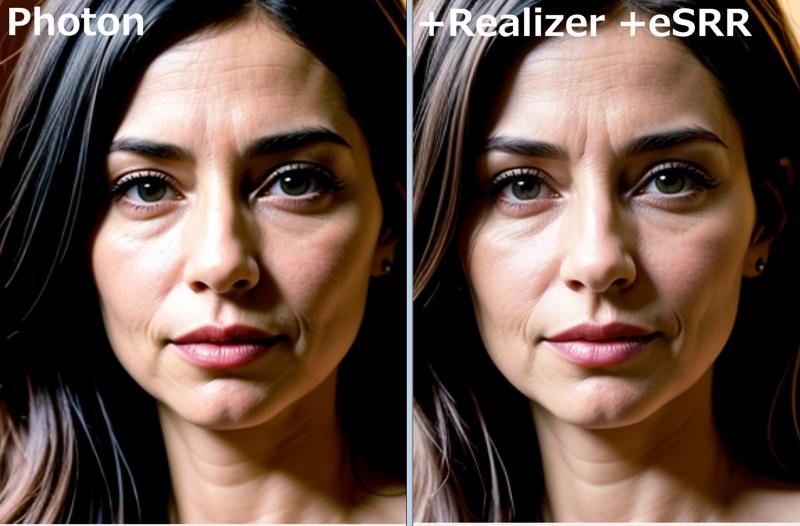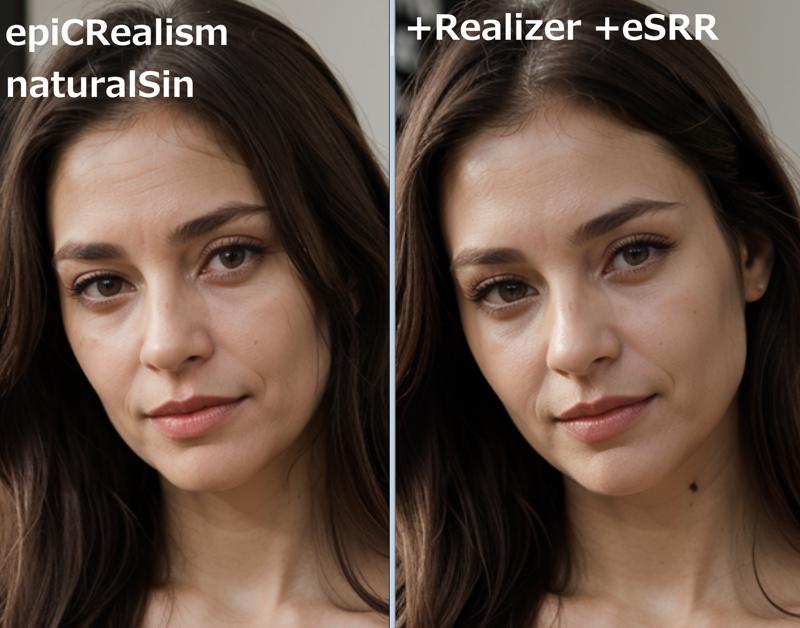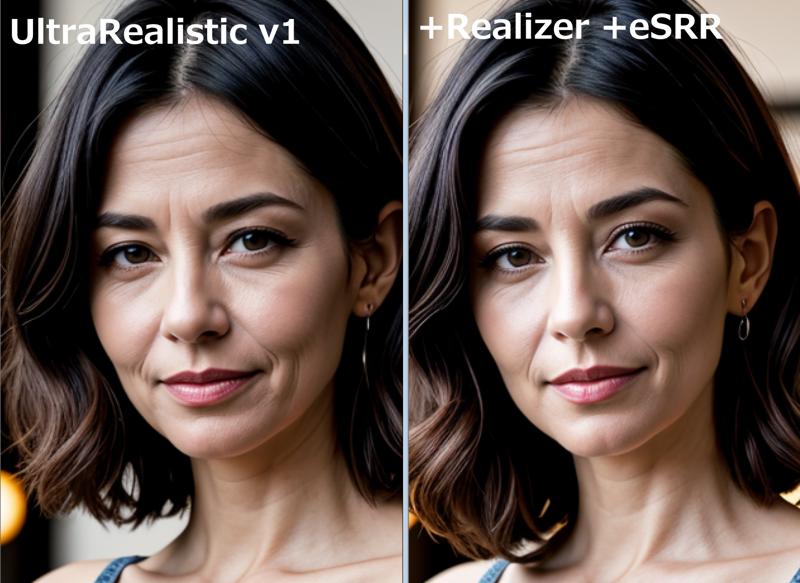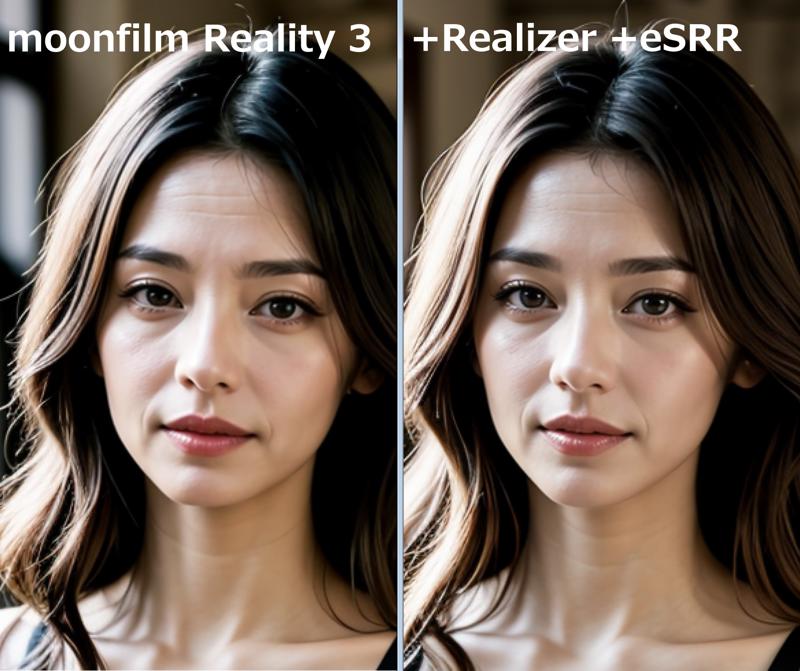Originally, this LoRA was created to make photorealistic images look more photographic when the output was more painterly and not very photorealistic.
But it was not very effective on painterly images.
However, it was found to have a significant effect on improving photographic images. Based on what it learned, we can expect some effect in increasing the resolution, but the image quality can improve more than expected.
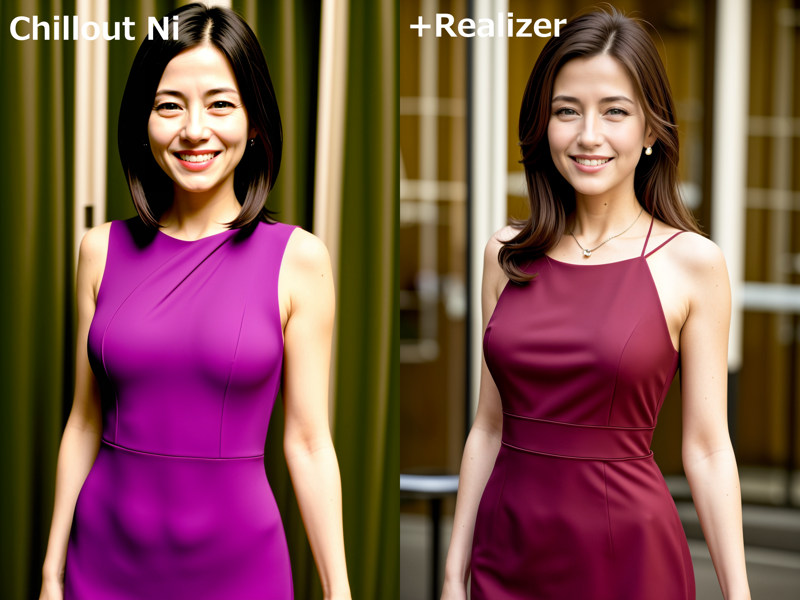
The training data uses materials that take into consideration sub-surface scattering, which occurs when strong light hits the skin and causes internal scattering, brightening the surrounding area, and I have tried to ensure that human skin appears with a natural brightness.
As with eSRR, it is more effective when used with older models. It is not very effective on models that produce proper photographic images from the start.
The standard strength is around 0.5, but it might be more interesting to try using it at around 1.
This is also made in a similar way to eSRR, but LoRA increases the resolution from a different direction, and the two can be used together. Using either at around 0.3 can improve the output of almost all photographic models.
The difference this brings is not significant, so your evaluation will depend on your personal preferences. In my opinion, this improves the sense of focus, increases detail, and improves skin texture.
Below are close-up comparisons of the face of a 50-year-old woman generated using various models(Realizer:0.3, eSRR:0.3).
